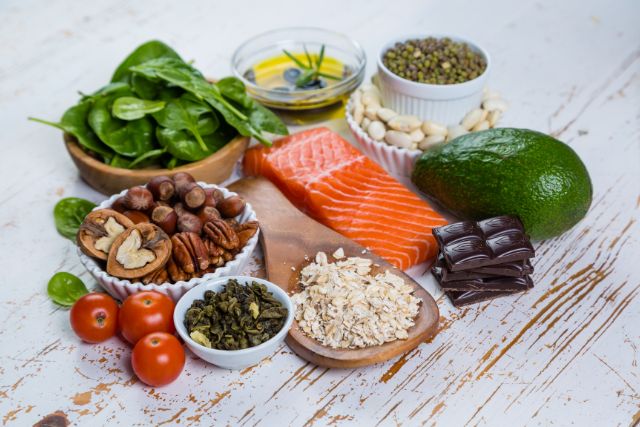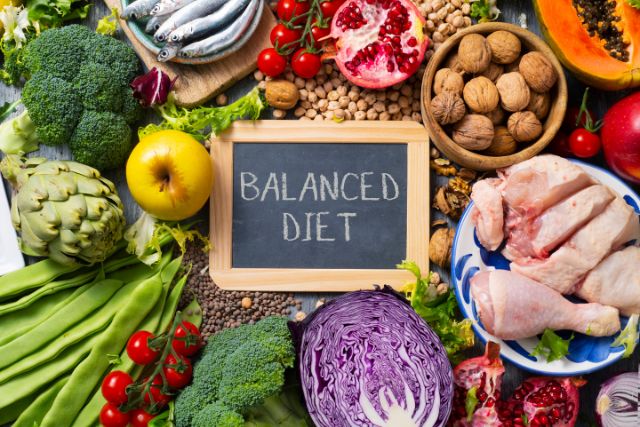Recent Posts
-

- Diabetes-Friendly Nutrition: Smart... 08.12.2024
-

- Nutrition for Chronic... 08.12.2024
-

- Anti-Inflammatory Diet: Food... 08.12.2024
-

- Low-Sodium and Heart-Healthy:... 08.12.2024
-

- Plant-Based Diets for... 08.12.2024
Pumpkin as Superfood: Nutritional Benefits

Over the last several years, "superfood" has become more popular as people seek nutrient-dense choices to improve their diets and general health or wellness. The pumpkin, often associated with seasonal pies and decorations, has emerged as a nutritional powerhouse among various superfoods. It provides a variety of health advantages that go well beyond its link with these meals.
Pumpkins have earned their reputation as a diverse and nutrient-rich supplement to a balanced diet because they are packed with critical nutrients, antioxidants, and unique bioactive substances by their composition. This investigation aims to investigate the extraordinary properties that make pumpkin a superfood. Specifically, we will explore its nutritional profile, its health benefits, and the inventive ways you may include it in your regular meals.
We invite you to accompany us on a tour through the pumpkin farm as we search for the many gems hidden inside this colorful and tasty gourd.
The pumpkin is a cultivar of the squash plant, a member of the Cucurbitaceae or squash family. It has smooth, slightly ribbed skin that is usually orange in color. However, certain variations might be yellow, green, or even white. Its form is typically round or oval and has a smooth surface. Not only are pumpkins well-known for their colorful look, but they are also often connected with the autumn and harvest seasons.
The inside flesh of a pumpkin is thick and sweet, and it has a mild and earthy flavor. In addition to being edible, pumpkin seeds, often known as pepitas, are highly prized for their nutritional value.
As far as cultivation goes, pumpkins may be cultivated in a wide range of temperatures, and they are a fundamental component of a wide variety of cuisines all over the globe. Desserts, pies, stews, and soups are some foods that might benefit from their inclusion in the kitchen. In addition to their culinary applications, pumpkins are highly valued for their nutritional advantages since they contain a high concentration of vitamins, minerals, and antioxidants for the body.
Vitamin-rich
Vitamins A, C, and E are just some vitamins that may be abundant in pumpkin, an edible fruit. Vitamin A is necessary for maintaining healthy skin, eyesight, and immune system function.
Rich in Fibre
The digestive system benefits significantly from the dietary fiber found in pumpkins. Fiber is an essential nutritional component that promotes satiety, regulates bowel motions, and may contribute to weight control.
Low Calories
Pumpkin, which has a relatively low-calorie count, is a choice rich in nutrients for those monitoring the calories consumed. It can be a satiating complement to meals without adding excessive calories overall.
Antioxidant Level
Pumpkins are orange because they contain antioxidants like beta-carotene, allowing them to retain color. A potent antioxidant that helps protect cells from harm caused by free radicals, beta-carotene is transformed into vitamin A in the body. It also affects the body's ability to produce vitamin A.
Mineral Content
Magnesium and potassium are two of the vital elements that pumpkins naturally contain. Potassium is essential for the efficient functioning of the heart and muscles. In contrast, magnesium is involved in the maintenance of bone health and the metabolism of energy among individuals.
Hydrate Support
As a result of its high water content, pumpkins are beneficial to one's hydration. Maintaining proper hydration is critical to one's general health and well-being.
Beta-Cryptoxanthin
Pumpkin contains several antioxidants, one of which is another antioxidant that may have anti-inflammatory benefits. It may also be beneficial to the health of the joints.
Low-GI
The pumpkin has a relatively low glycemic index (GI), which indicates that it has a reduced influence on the amount of sugar in the blood. Individuals interested in controlling their blood sugar levels may find this helpful.
Nutritional Density
Because they contain a wide range of nutrients in a small container, pumpkins are considered food-rich. Consuming meals that are high in nutrients will assist you in meeting your nutritional requirements without causing you to consume an excessive amount of calories.
Flexibility in cooking
As a versatile component, pumpkin may be used in a variety of cuisines, including both sweet and savory preparations. Pumpkin may be included in your diet in various ways, including but not limited to soups, stews, pies, and smoothies.
The nutritional value of pumpkin might change somewhat based on the individual variety of pumpkin and the method by which it is cooked. Pumpkin may be a tasty and healthy addition to a well-balanced diet, regardless of whether it is roasted, pureed, or utilized in a variety of recipes available.
Disclaimer: The information provided in this article is for general information purposes only. All information in this article is sourced from other websites, and we do not represent any rights regarding the contents and information on the site. All rights belong to their original owner.





